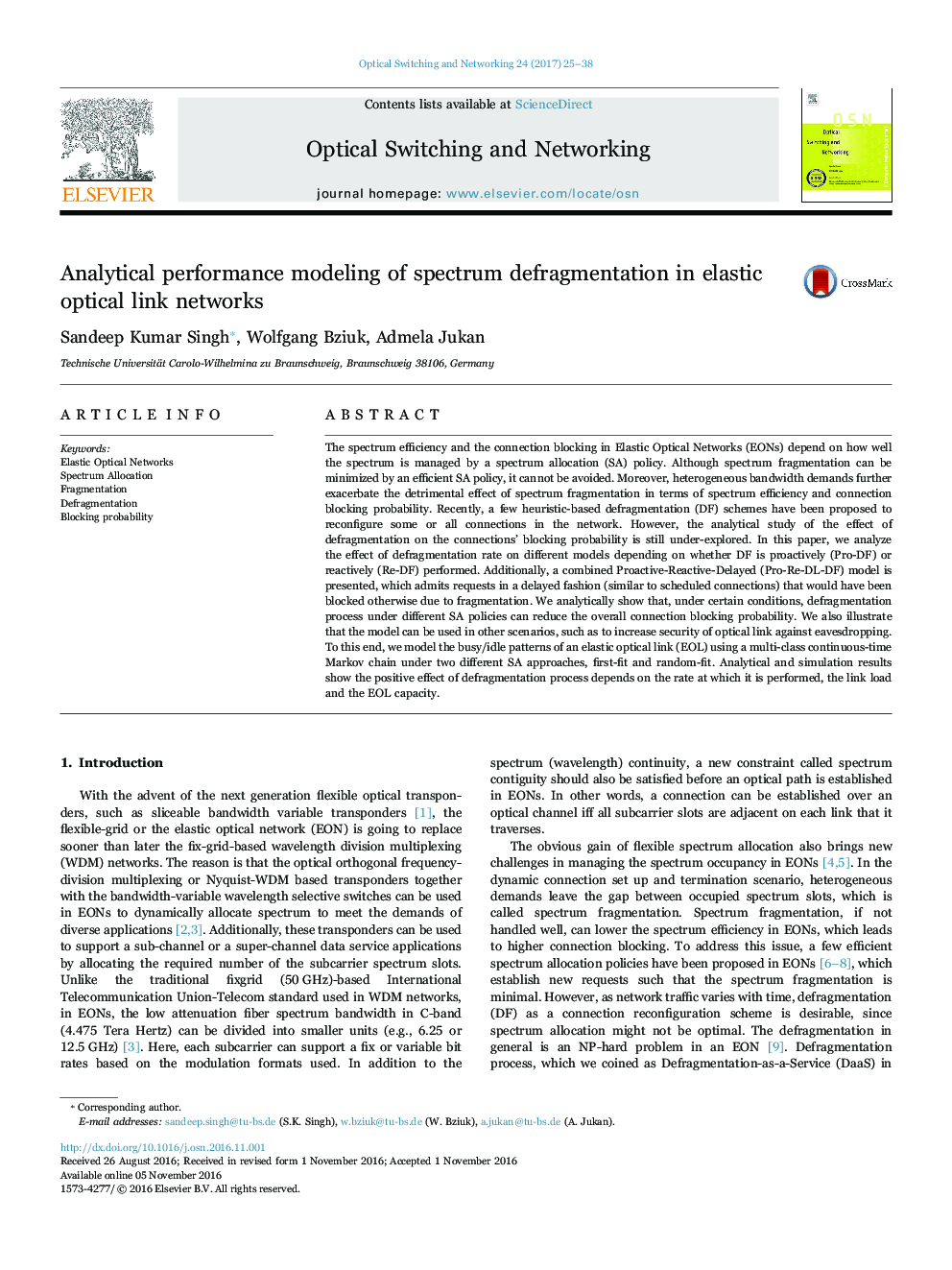| Article ID | Journal | Published Year | Pages | File Type |
|---|---|---|---|---|
| 4957228 | Optical Switching and Networking | 2017 | 14 Pages |
Abstract
The spectrum efficiency and the connection blocking in Elastic Optical Networks (EONs) depend on how well the spectrum is managed by a spectrum allocation (SA) policy. Although spectrum fragmentation can be minimized by an efficient SA policy, it cannot be avoided. Moreover, heterogeneous bandwidth demands further exacerbate the detrimental effect of spectrum fragmentation in terms of spectrum efficiency and connection blocking probability. Recently, a few heuristic-based defragmentation (DF) schemes have been proposed to reconfigure some or all connections in the network. However, the analytical study of the effect of defragmentation on the connections' blocking probability is still under-explored. In this paper, we analyze the effect of defragmentation rate on different models depending on whether DF is proactively (Pro-DF) or reactively (Re-DF) performed. Additionally, a combined Proactive-Reactive-Delayed (Pro-Re-DL-DF) model is presented, which admits requests in a delayed fashion (similar to scheduled connections) that would have been blocked otherwise due to fragmentation. We analytically show that, under certain conditions, defragmentation process under different SA policies can reduce the overall connection blocking probability. We also illustrate that the model can be used in other scenarios, such as to increase security of optical link against eavesdropping. To this end, we model the busy/idle patterns of an elastic optical link (EOL) using a multi-class continuous-time Markov chain under two different SA approaches, first-fit and random-fit. Analytical and simulation results show the positive effect of defragmentation process depends on the rate at which it is performed, the link load and the EOL capacity.
Keywords
Related Topics
Physical Sciences and Engineering
Computer Science
Computer Networks and Communications
Authors
Sandeep Kumar Singh, Wolfgang Bziuk, Admela Jukan,
